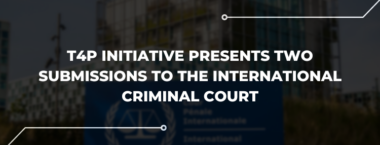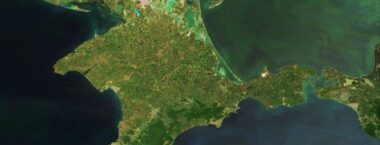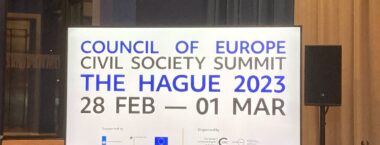
Torments, Torture Chambers, Executions: T4P Initiative Presents Two Submissions to the International Criminal Court
Information about extrajudicial executions of Ukrainians by the Russian military and Russian torture chambers in...
28 September 2023
20.05.2020
The analytical paper “The occupation of Crimea: No markings, no names and hiding behind civilians” was co-developed by the Ukrainian Helsinki Human Rights Union and Regional Center of Human Rights. It brings to the fore a number of thorny questions under the international humanitarian law, namely, on the prohibited means and methods of warfare by the Russian Federation, using the so-called “little green men” – masked Russian soldiers in unmarked green army uniforms with modern Russian military weapons. These Russian servicemen were instrumental in seizing control over the Ukrainian governmental buildings and strategic military bases during the takeover of Crimea in the early phase of the conflict in February-March 2014.
In the last days of February 2014, the number of protests against the new Ukraine’s government appointed after the bloody EuroMaidan events began to rise, particularly in the eastern regions of the country and in the Autonomous Republic of Crimea. It is quite obvious today that these movements were provoked and supported by an outside party, the Russian Federation, and that without such support and guidance they would never have arisen and would have had no chance of succeeding.
On 27 February armed men, most of them dressed in military uniforms without insignia carrying modern Russian military weapons and equipment, seized government buildings in Crimea’s capital Simferopol, including the Crimean Parliament. Also, blocking off the military bases of the Ukraine’s Armed Forces and other military formations started. On 16 March, Russia held the so-called “referendum” in Crimea, following which on 18 March it “accepted Crimea and the city of Sevastopol in the Russian Federation”. Both the so-called “referendum” and “accession to the RF” constituted violations of the fundamental principles of international law, and their results are neither valid nor recognized by Ukraine as well as the vast majority of world countries and leading international organizations, including the United Nations.
Hence, it took less than one month for the Russian Federation to gain a control over the territory of Crimea. What made it so easy? Obviously, this became possible due to multiple factors, with new methods of warfare used by Russia, which Ukraine was not prepared to counter, having played a major role. Of particular interest is the use of so-called “little green men” (men in unmarked military uniforms) to seize the government buildings, to surround and block off and capture the Ukrainian military units with the use of civilians, as well as the use of perfidy and deception, in violation of international humanitarian law.
Given the importance of these issues for the task of ensuring international security and preventing reoccurrence of such actions in the future, the current paper seeks to provide a detailed analysis of the prohibited means and methods of warfare used by Russia during Crimea’s occupation in February-March 2014. Some of these issues are effectively considered in an analytical legal study for the first time. It is also a welcome addition to the discussion on the use of “human shields” in international humanitarian law, which has a great potential to enrich the debate on such prohibited methods, and clarify some of the most important matters of IHL that call for immediate resolution. The civilized world must be able to respond to such threats effectively, and the states must be prepared for combating such conduct.
The analytical report itself is available here, the subject-matter infographics is placed here.
It should be noted that this analytical paper is being a logical continuation of one of our mainstream activities aimed at keeping war criminals accountable for the occupation of the Crimean Peninsula – in early 2019, UHHRU co-authored a submission to the International Criminal Court concerning the use of civilians as “human shields” during capture of the strategic targets in Crimea. A subject-matter interview of our lawyer from February 2019 rests under this link, in Ukrainian.
If you find an error on our site, please select the incorrect text and press ctrl-enter.

Information about extrajudicial executions of Ukrainians by the Russian military and Russian torture chambers in...
28 September 2023

On June 6, 2023, the Southern Area Military Court of Rostov-na-Donu sentenced Mr.Bohdan Ziza, a...
08 June 2023

On April 4, 2023, the Cabinet of Ministers of Ukraine (CMU) approved Order No. 288-r,...
03 May 2023

The Civil Society Summit on the Council of Europe (CoE) took place in The Hague...
31 March 2023